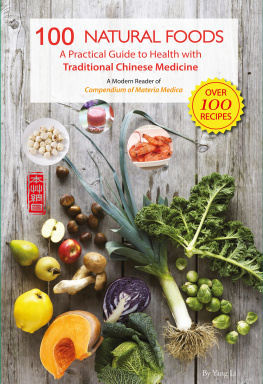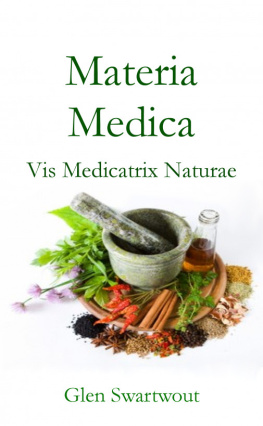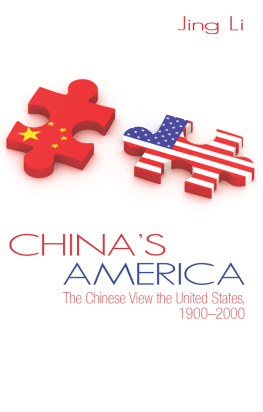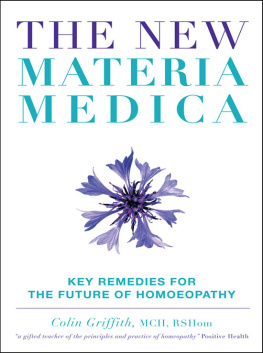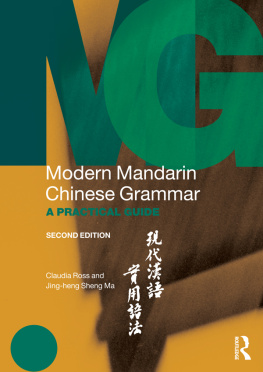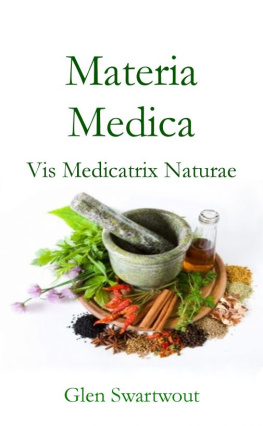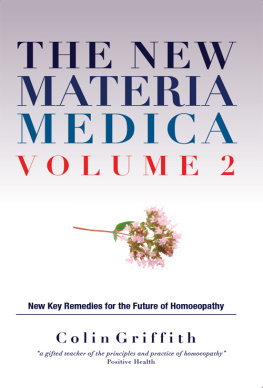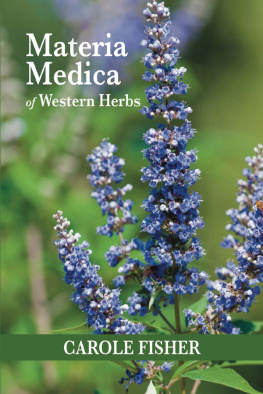Jing-Nuan - Illustrated Chinese Materia Medica
Here you can read online Jing-Nuan - Illustrated Chinese Materia Medica full text of the book (entire story) in english for free. Download pdf and epub, get meaning, cover and reviews about this ebook. year: 2005, publisher: Oxford University Press, genre: Home and family. Description of the work, (preface) as well as reviews are available. Best literature library LitArk.com created for fans of good reading and offers a wide selection of genres:
Romance novel
Science fiction
Adventure
Detective
Science
History
Home and family
Prose
Art
Politics
Computer
Non-fiction
Religion
Business
Children
Humor
Choose a favorite category and find really read worthwhile books. Enjoy immersion in the world of imagination, feel the emotions of the characters or learn something new for yourself, make an fascinating discovery.

- Book:Illustrated Chinese Materia Medica
- Author:
- Publisher:Oxford University Press
- Genre:
- Year:2005
- Rating:5 / 5
- Favourites:Add to favourites
- Your mark:
- 100
- 1
- 2
- 3
- 4
- 5
Illustrated Chinese Materia Medica: summary, description and annotation
We offer to read an annotation, description, summary or preface (depends on what the author of the book "Illustrated Chinese Materia Medica" wrote himself). If you haven't found the necessary information about the book — write in the comments, we will try to find it.
Illustrated Chinese Materia Medica — read online for free the complete book (whole text) full work
Below is the text of the book, divided by pages. System saving the place of the last page read, allows you to conveniently read the book "Illustrated Chinese Materia Medica" online for free, without having to search again every time where you left off. Put a bookmark, and you can go to the page where you finished reading at any time.
Font size:
Interval:
Bookmark:
AN ILLUSTRATED Chinese Materia Medica

Chinese Materia Medica
Jing-Nuan Wu
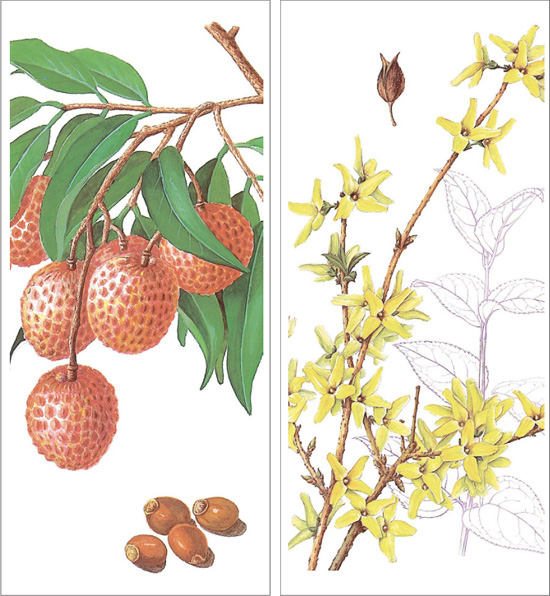
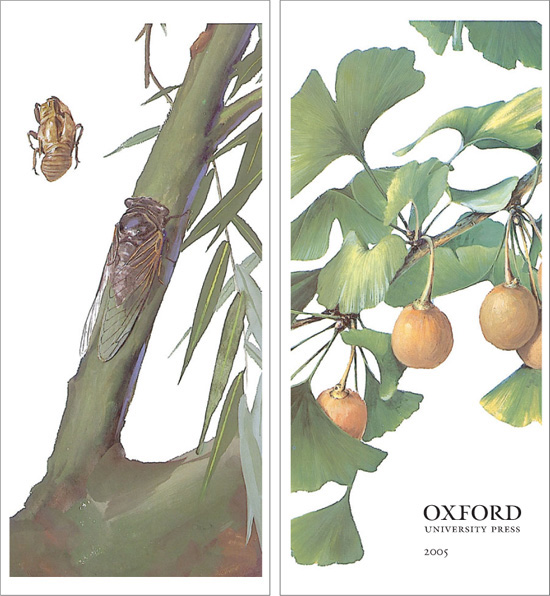

Oxford New York
Auckland Bangkok Buenos Aires Cape Town Chennai
Dar es Salaam Delhi Hong Kong Istanbul Karachi Kolkata
Kuala Lumpur Madrid Melbourne Mexico City Mumbai Nairobi
So Paulo Shanghai Taipei Tokyo Toronto
Copyright 2005 by Oxford University Press, Inc.
Published by Oxford University Press, Inc.
198 Madison Avenue, New York, New York, 10016
www.oup.com
Oxford is a registered trademark of Oxford University Press
All rights reserved. No part of this publication may be reproduced,
stored in a retrieval system, or transmitted, in any form or by any means,
electronic, mechanical, photocopying, recording, or otherwise,
without the prior permission of Oxford University Press.
Library of Congress Cataloging-in-Publication Data
Wu, Jing-Nuan, 19332002
An illustrated Chinese materia medica / Jing-Nuan Wu.
p. cm.
Includes bibliographical references and index.
ISBN-13 978-0-19-514017-0
ISBN 0-19-514017-6
1. Materia medica, VegetableChina. 2. Medicine, Chinese.
3. HerbsTherapeutic useChina.
RS180.C5 W785 2001
615.320951dc21 00-058472
Dose schedules are being continually revised and new side effects recognized.
Oxford University Press and the author make no representation, express or implied,
that the dosages in this book are correct. For these reasons readers are strongly
urged to consult with a physician before starting any herbal treatment.
9 8 7 6 5 4 3 2 1
Printed in China on acid-free paper
A book such as this is only possible with the combined efforts of many different people. The labors to create it have spanned years and ultimately, the project outlived its editor. I apologize in advance for any names that should be among those listed here but were, instead, lost in the shuffle of an estate.
Special thanks must be given to Xinzhong Qian for making available to a western audience the contents of this book, already so familiar to Chinese doctors. It is with his help that we are able to broaden the scope of medical and botanical knowledge in the hopes that it leads to the ongoing refinement of the healing process around the world.
Humble thanks to Mengda Shu for offering her expertise at the last minute. Her efforts allowed me to believe that this project might actually reach a conclusion.
Thanks to Xiaodong Cai who appeared like a miracle with all the answers.
Susannah Brouwer, Harry Hong, Christina Liang, and Kevin Wang must be thanked for their tireless work on the translation and illustrations.
For their keen eyes and ready pens, thank you to Casaundra Williams, Marcia Warrant, Joan Scott, and Carol Fontein.
We are forever indebted to Susan Myatt for her unwavering loyalty.
Jing Nuan Wu was my father and he died before he could see this book published. It was a project he had been envisioning for years. I know he would have wanted to thank Ann Miller for all of her emotional support throughout the process. A final thank you to all of his colleagues and patients who kept him inspired. Their ten thousand different forms of support and guidance made his visions reality.
Elizabeth Yng-Wong
AN ILLUSTRATED Chinese Materia Medica
T raditional Chinese Medicine (TCM) uses many therapeutic modalities, the major one being Chinese herbal medicine. Its development has been a historical process flowing and flowering with Chinese culture for more than four thousand years. Its practice follows theories of holistic and integrative principles. Therapy is based on understanding relations between part and whole, distinguishing symptom and appearance from true cause, and treating each individual case as unique.
The foundation for this medical practice is the Chinese materia medica. More than 6,000 substances have been used and their effects documented and researched in the past four millenia. Clinical practice and empirical results from millions of medical cases have created a data bank on individual substances as well as prescriptions of complex compounds. This literature is unparalleled and unsurpassed in the worlds medical knowledge.
In fact, stories about the use of herbs to improve human health are older than TCM itself. Legends about herbal medicine start with Shen Nong (The Divine Farmer), who introduced agriculture and animal husbandry into China. According to the ancient book Master of Huai Nan (Huai Nan Zi), by Liu An of the Han dynasty, Shen Nong Shi (3000 B.C.) tasted a hundred herbs and came across seventy poisonous herbs each day.
The use of herbs is found in many historical texts. The five-taste concept of herbs is mentioned in the Spring and Summer Annals of Mr. Lu (Lu Shi Chun Qiu), a text of the Qin (221206 B.C.) dynasty. Meanwhile, over 120 substances of plant, animal, and mineral origin were mentioned in the Classic of the Mountains and Seas (Shan Hai Jing), a text of the Warring States period (403221 B.C.). The earliest known pharmacological work is the Prescriptions for Fifty-Two Ailments (Wu Shi Er Bing Fang), recovered from Ma Wang Dui Tomb Three in Hunan province in 1973. This work appears to have been composed before the end of the third century B.C. More than 250 medicinal substances were named and their prescriptions discussed. The medicinal substances in the book are comparable to those found in the later materia medica and prescription manuals, but the theoretical foundation of this book differs from that of contemporary traditional Chinese medicine. The theoretical foundation of what we now regard as Traditional Chinese Medicine is based mainly on the Classic of Internal Medicine, also called the Yellow Emperors Inner Classic.
The Yellow Emperors Inner Classic (Huang Di Nei Jing) was compiled in the Late Han dynasty (A.D. 25220), but parts of it may come from the Warring States period (475221 B.C.). Based on the theories of Yin-Yang and the Five-Phases (Wu Xing), it systematically interpreted the physiology and pathology of the internal organs and the meridian channels of the body. It set forth the origins of illness and defined principles for diagnosis and treatment. During the same period, a second major work appeared, summarizing the experience of Chinese practitioners in the prevention and treatment of disease. This was Zhang Zhong Jings Discussion of Cold-Induced Diseases (Shang Han Lun). Building on the Inner Classic, this book provided guidelines for treatment and was considered a prescription manual. It listed 113 prescriptions and 397 therapies for infectious disease as well as 265 prescriptions for miscellaneous diseases.
The literary tradition of Chinese herbal knowledge also began in the Later Han dynasty with Shen Nongs Herbal (Shen Nong Ben Cao Jing), also known as the
Next pageFont size:
Interval:
Bookmark:
Similar books «Illustrated Chinese Materia Medica»
Look at similar books to Illustrated Chinese Materia Medica. We have selected literature similar in name and meaning in the hope of providing readers with more options to find new, interesting, not yet read works.
Discussion, reviews of the book Illustrated Chinese Materia Medica and just readers' own opinions. Leave your comments, write what you think about the work, its meaning or the main characters. Specify what exactly you liked and what you didn't like, and why you think so.

